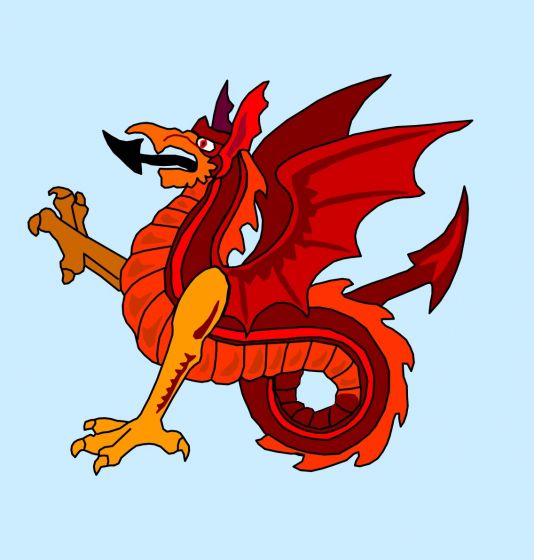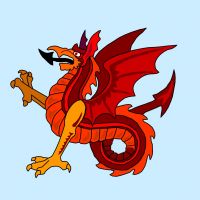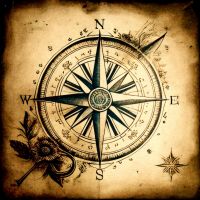
Wyvern
Wyvern
About
- Username
- Wyvern
- Joined
- Visits
- 3,146
- Last Active
- Roles
- Member
- Points
- 5,371
- Rank
- Cartographer
- Badges
- 24
-
Birdseye cut-out problems
Your first comment sounds like the pink shape is being drawn on the wrong sheet. If you're using a drawing tool to create it, that may be set to a different default sheet than the one your Color Key effect is on. If so, it's easily changed by simply carrying out a Change Properties command immediately after finishing drawing the shape - so before it vanishes (you can check to see which sheet it's drawing on while you're drawing it in the information boxes along the top of the CC3+ screen).
I'm guessing that the fractal poly's ending up on the wrong sheet too, as there's no reason it wouldn't work properly just because it's a fractal shape.
-
Drawing lakes over forests and mountains sheets with 2023 MonkeyFrog Overland style
-
Flooring Maps
You can use Ctrl+C or the drop-down Edit menu's Copy command, select the items you want to copy over, and then click "Do it", picking a suitable point to copy them from.
You will need to prepare a new map file first (just set up a blank map in the correct style, and of a suitable size), and have both it and your existing map open together to do this more easily. Providing you open each map separately, that won't be a problem (just use Windows Explorer to find the files you need, for instance).
-
Community Atlas: Kara's Vale, Ethra, Doriant
Thanks @Ricko. In cases like this, I simply try to work with the original style as far as possible, and it is practical to "force" the Mike Schley cliffs to work as north-facing, even if it does mean quite a bit more effort. It would certainly be helpful to have some north-facing cliffs in this style already though!
For the central valley here, I simply added a Solid 10 polygon over the lower part to darken it a little. The effect is very subtle, but I found using the Solid 20 fill felt too obvious, whereas this seemed to help the effect just enough to fool the eye - to me, at least 😎.
-
Galery of NPC
-
Community Atlas: Aenos Isle North, Demosthenes Swamp, Artemisia
-
Tracing an existing map on paper or a image file.
Before you import the image file you want to trace to your CC3+ drawing, make sure you have a copy of the image file in the same folder as your CC3+ map. If you don't do this, you may well end up with a big red cross where your image file should be the next time you open it, because CC3+ can't find it any more.
There are other ways to avoid this happening, but keeping the files in the same folder is by far the easiest to tell you about quickly here.
I do this all the time, and it becomes second nature after only a short time; import, rescale, and get mapping!
-
Live Mapping - Village Battlemap
Slightly terrifying to watch Remy wearing different thatched roofs as a hat at times on the livestream replay 😉🤠 (I'm taking time-out from catching-up to check-in here briefly!) The dormer one seemed to work best, though it's not especially stylish 😁.
Good stream though so far - even if I have just got a sneak preview of what the final map will look like by dropping-by here mid-replay!
-
What's your rank and points?
Well, the whole rank and points thing in the current form has only been around since late 2020, when the Forum had a major overhaul. Higher ranks have the advantage of getting longer to edit your own posts, which is handy for those of us less adept at avoiding typos, without being a major difference. Beyond that, it's all just a bit of fun, really!
-
How to use the Ball Filter?
Real-world observatory domes aren't "pure" spheres (nor are they transparent, but appreciate this is for a fantasy setting!), and are often made up of either individual smaller flat pieces - such as a geodesic dome - or curved, commonly into parts of a hemispherical gyre. Modern methods allow the construction of larger curved dome areas (using, e.g., fibreglass), but in all cases, there needs to be a segment of the dome that can open, either as a slot from apex to base of the dome, or where part of the dome can be removed/slid away, because the whole point of the dome is to protect the viewing equipment inside it from the weather, including temperature variations, both when in use and when not.
Consequently, the final red-roofed structure in your first posting's image is probably closer to a genuine observatory dome overall than anything else. You could even make the joins between segments more obvious, and you could add a rectangular panel for the viewing slit in the dome (because these don't narrow towards the dome's top - the instrument inside still needs the same viewing width for the slit to work). However, this really depends on what the observatory is used for - a transparent roof suggests something unusual inside, for instance.
Something you could try, based on the standard CD3 house roof options, is simply to increase the number of panels involved, since if you create more roof panels, the whole starts to look more rounded-circular, and loses its angular shape. Appreciate you're doing this in DD3 instead, but the principle holds - rotated copy by a specific small angle once you have your initial slim roof segment drawn. I've done that in CD3 drawings before now, to get a conical roof, for instance. If you're unsure what size of roof segment might work better, try some experiments using the CD3 drawing tools first.




